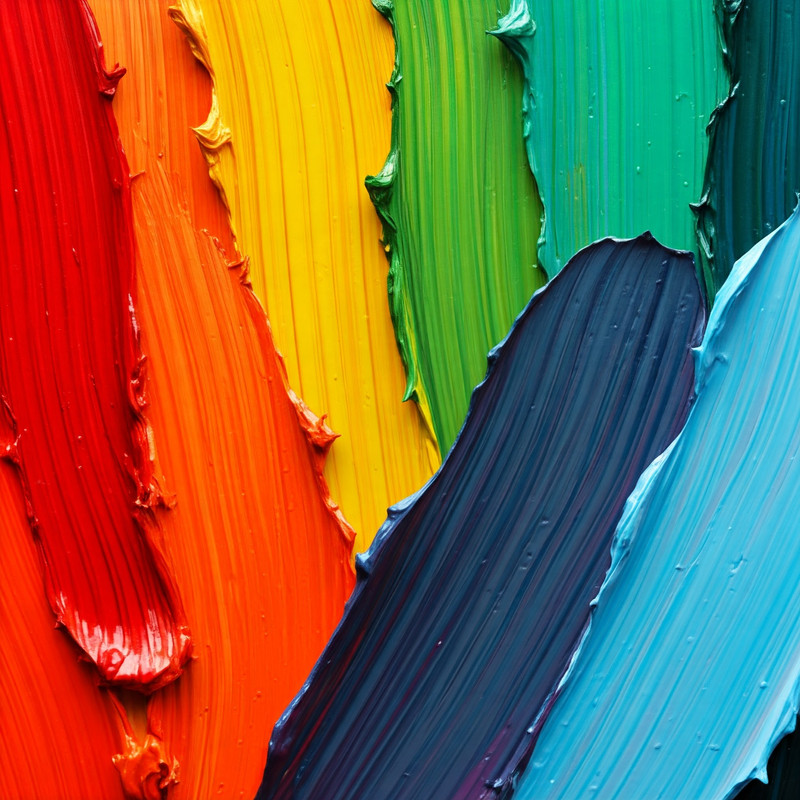Rainbows are one of nature's most beautiful phenomena, and they have fascinated humanity for centuries. They consist of a spectrum of colors that always appear in the same order: red, orange, yellow, green, blue, indigo, and violet (ROYGBIV). These colors are not only visually striking but also play a key role in color theory and design. In this article, we’ll break down the colors of the rainbow, and their corresponding hex codes.
The Colors of a Rainbow and Their Hex Codes
-
Red
- Hex Code:
#FF0000
Red is the first color in the rainbow and is often associated with passion, energy, and urgency. It’s a dominant color that is frequently used to grab attention in designs.
- Hex Code:
-
Orange
- Hex Code:
#FF7F00
Orange is a blend of red and yellow, representing warmth and enthusiasm. It’s vibrant but less aggressive than red, making it a great choice for designs that want to evoke energy without overwhelming the viewer.
- Hex Code:
-
Yellow
- Hex Code:
#FFFF00
Yellow is the color of sunshine and optimism. It’s bright and joyful, often used to create a sense of happiness and positivity in design.
- Hex Code:
-
Green
- Hex Code:
#00FF00
Green symbolizes nature, growth, and tranquility. It’s a soothing color that is widely used in designs related to health, environment, and sustainability.
- Hex Code:
-
Blue
- Hex Code:
#0000FF
Blue is a calm, stable color that often represents trust and professionalism. It’s widely used in corporate branding and designs that aim to evoke a sense of calm and reliability.
- Hex Code:
-
Indigo
- Hex Code:
#4B0082
Indigo is a deep color situated between blue and violet. It carries a sense of mystery and depth, often used in designs that seek to provoke thought and reflection.
- Hex Code:
-
Violet
- Hex Code:
#8B00FF
Violet, the final color in the rainbow, is associated with creativity, luxury, and spirituality. It’s often used in designs that want to evoke imagination and inspiration.
- Hex Code:
Why Understanding Rainbow Colors Matters for Designers
Rainbow colors offer more than just aesthetic beauty. They help designers understand the natural progression of colors and how different hues relate to one another. By understanding how these colors interact, you can create harmonious and balanced designs, whether you’re working with web interfaces, graphic design, or product packaging.
-
Psychology of Color: Each color in the rainbow evokes different emotions and reactions. Understanding the psychological impact of each color can help you choose the right hues for your designs. For instance, red and orange are great for call-to-action buttons, while green and blue are often used in healthcare and finance websites to convey trust and security.
-
Cultural Significance: Different cultures may assign various meanings to each color. Red is often associated with good luck in many Asian cultures, while green is tied to environmentalism in Western cultures. Knowing these cultural connotations can help you design for global audiences.
-
Web and Graphic Design: In web and graphic design, hex codes are essential. Designers need to know the exact hex code of each color to ensure consistency across different mediums. For instance, if you are creating a brand identity, using the precise hex code for each rainbow color ensures that your design remains cohesive, regardless of where it’s displayed (web, print, etc.).
Conclusion
The rainbow’s colors—red, orange, yellow, green, blue, indigo, and violet—are not only a natural wonder but also a foundational element in color theory. Understanding their hex codes and how they fit into different color schemes can elevate your design work by making it more visually harmonious, impactful, and emotionally resonant. Whether you’re designing a vibrant website, creating a brand palette, or just looking to understand color theory better, the rainbow offers endless inspiration.
